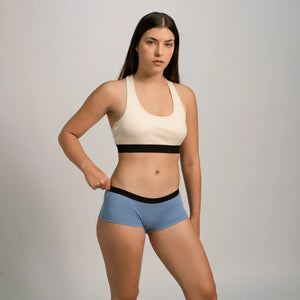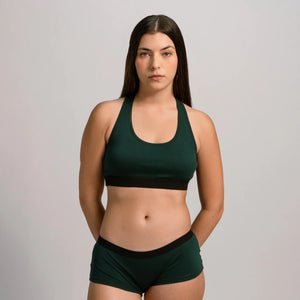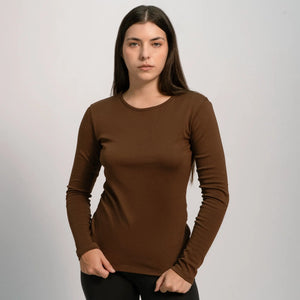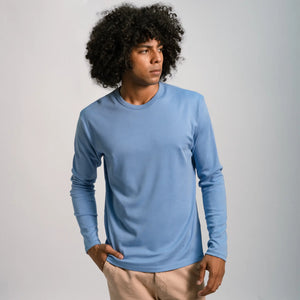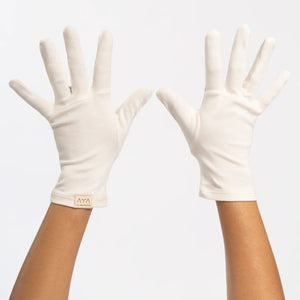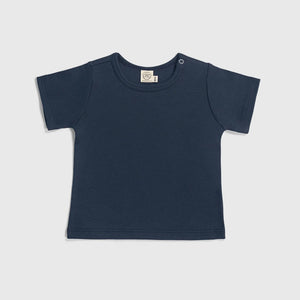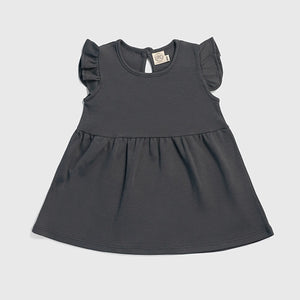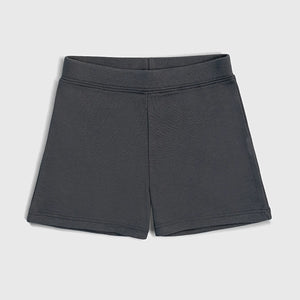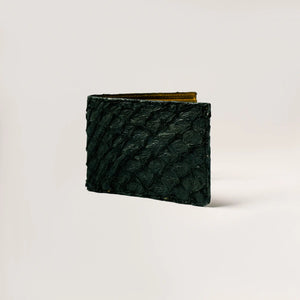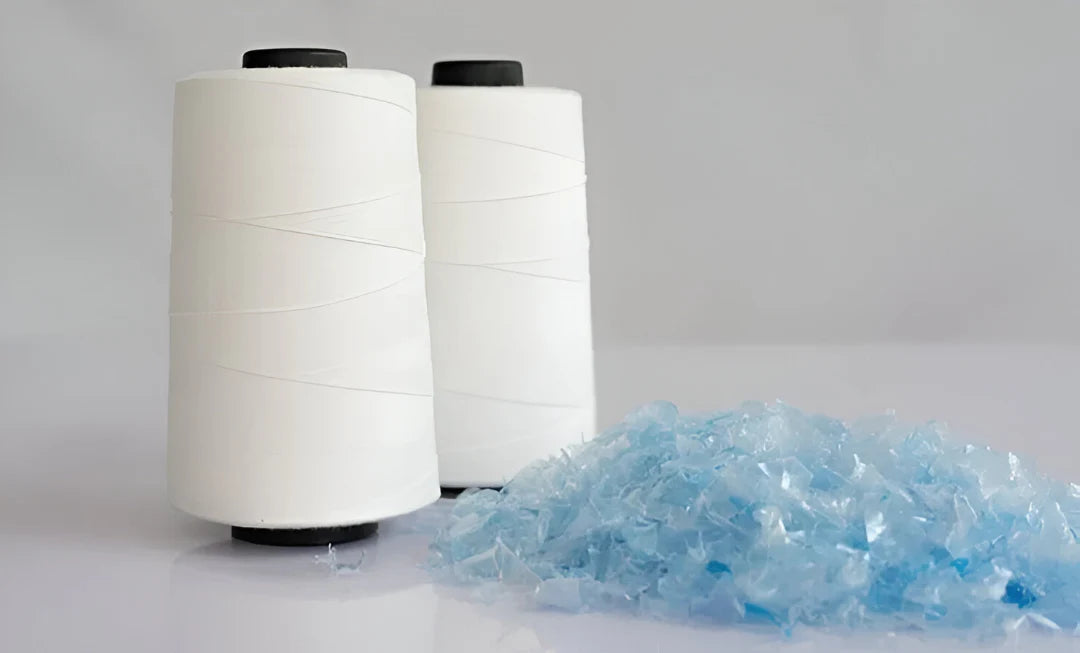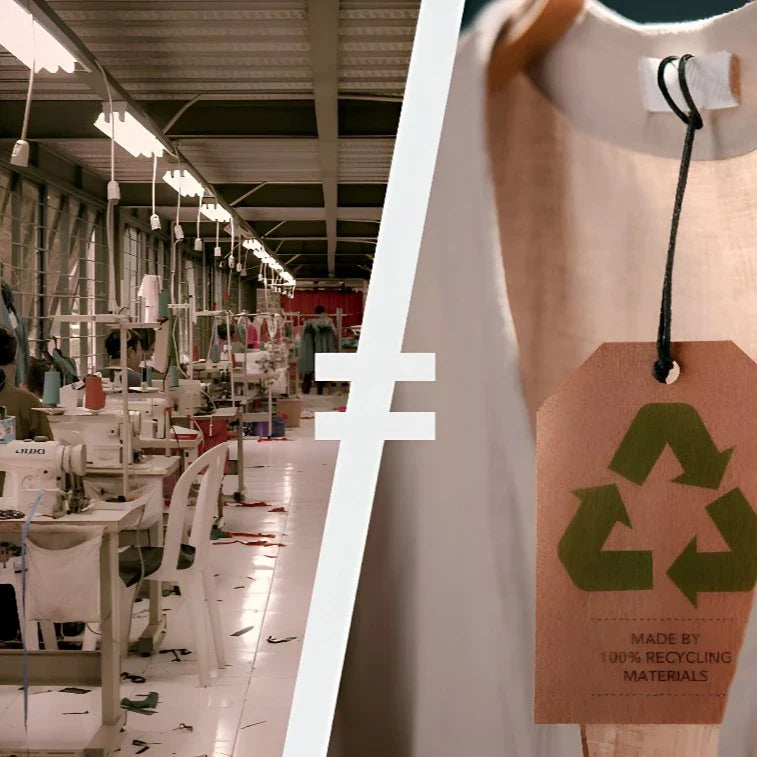The Power Of Plant-Based Fibers: How Organic Cotton And Sustainable Fibers Transform Textile Waste
.
AYA | MARCH 26, 2025
READING TIME: 6 minutes
By Jordy Munarriz & Lesia Tello
AYA | MARCH 26, 2025
READING TIME: 6 minutes
By Jordy Munarriz & Lesia Tello
From the industrialization of fashion to today's fast-paced world, plant fibers have been a primary foundation of our garments. Among these, cotton has long dominated the market. However, the environmental cost of conventional cotton production has spurred a growing interest in sustainable alternatives.
In this article, we analyze why cotton remains so popular and how improved water management practices can mitigate the environmental footprint of textile agriculture, all within the context of Zero Waste initiatives and global awareness for World Water Day.
Why Cotton Dominates the Fashion Market
Cotton has long been the backbone of the fashion industry. It offers exceptional softness, breathability, and ease of dyeing, making it ideal for a range of products from everyday basics to luxury garments. Its natural comfort and ability to adapt to various finishes have made it the go-to fiber for designers and consumers alike.
Comparative Analysis of Plant-Based Fibers [1,2,3,4]
| Aspect | Conventional Cotton | Hemp | Linen | Bamboo | Jute |
|---|---|---|---|---|---|
| Softness & Comfort | Exceptionally soft, highly breathable; familiar to consumers | Strong and durable, becomes softer with use | Crisp texture, highly breathable | Naturally smooth, yet quality depends on processing | Coarser texture; often blended for softness |
| Water Usage | High – up to 2,700 L/kg* | Uses up to 80% less water than cotton | Low to moderate water requirements | Variable – low with eco-friendly processing; high if chemicals are used | Very low water consumption |
| Chemical Inputs | Heavy use of pesticides and fertilizers | Minimal pesticide use; naturally pest-resistant | Minimal chemicals; low input | Low when processed mechanically; controversy exists over chemical processing | Minimal chemical input |
| Economic Infrastructure | Extensive global supply chain; well-established markets | Emerging, niche markets growing steadily | Traditional and region-specific | Innovative but less established overall | Limited mainly to local production |
| Environmental Impact | High due to water, energy, and chemical usage | Low, regenerative, improves soil quality | Low, energy-efficient production | Potentially low if processed sustainably; otherwise moderate | Minimal, biodegradable |
*Note: Water usage figures and other values can vary significantly depending on farming practices.
Yet, behind this success lie significant environmental drawbacks. Conventional cotton production is highly resource-intensive. For example, it can require up to 2,700 liters of water per kilogram of fiber [1,2,3], and the heavy reliance on pesticides and fertilizers has detrimental effects on ecosystems and human health. Considering that cotton represents only 2.5% of arable land, it accounts for 16% and 4% of total global pesticide and fertilizer use, respectively. Therefore, global cotton cultivation is estimated to require 200,000 tons of pesticides and 8 million tons of fertilizers annually [2,5]. Despite these challenges, cotton’s established infrastructure and consistent quality have allowed it to maintain its market dominance.
The Waste Dilemma: Cotton vs. Sustainable Alternatives
The “wear-and-throw" culture of fast fashion means many garments are discarded after only a few wears [3,6], and the need to constantly repurchase drove Chinese ultrafast fashion retailer Shein to consistently churn out up to 10,000 new designs per day in 2023 [6].
Therefore, it’s essential to identify what materials our clothes are made from and how durable they are so we can make smart purchasing decisions. For instance, research shows that fibers like hemp and linen can extend the lifespan of garments by up to 50% compared to cotton [1,7,8]. This increased longevity not only cuts down on waste but also reduces the overall environmental footprint of textile production.
The disparity is striking: cotton’s qualities will continue to meet the needs of the vast majority of the market unless production processes for other plant-based fibers are optimized and scaled up. This battle is far from even.

Plant-based fibers: Top left: Jute. Top right: Cotton. Bottom left: Linen. Bottom right: Hemp.
Organic Cotton Unleashed: Shaping Ethical Fashion
Unlike conventional cotton, which relies heavily on synthetic pesticides, fertilizers, and water-intensive practices, organic cotton is cultivated using natural methods that protect both the ecosystem and the health of the farmers. This innovation in cotton farming can reduce water consumption by up to 75%. This dramatic reduction is due to organic practices that promote healthier soil with better water retention and reduced evaporation, leading to significant water savings in arid regions [4,8].
The benefits extend beyond water conservation. Organic cotton farming avoids synthetic chemicals that not only contaminate water bodies but also pose severe health risks to farmworkers and nearby communities. Studies have shown that organic practices eliminate the exposure to dangerous pesticide residues, thereby reducing the risk of long-term health issues such as respiratory diseases, neurological disorders, and cancers among farmers and consumers alike [4]. In addition, organic cotton supports biodiversity by fostering natural pest control and improving soil fertility through crop rotation and organic composting [3,4]. This holistic approach to cultivation creates a resilient agroecosystem that is better equipped to withstand the challenges of climate change.
The UNEP report on Sustainability and Circularity in the Textile Value Chain highlights the transformative potential of organic cotton in a circular economy. According to the report, switching to organic cotton can significantly reduce the overall carbon footprint of textile production. By integrating it into a closed-loop system, organic cotton fibers can be recycled more efficiently, thus reducing waste and the environmental impact of discarded textiles [9,10].
A study conducted at Sains Malaysia University found that cotton cellulose fibers can be efficiently defibrillated to produce cellulose nanocrystals (CNCs). These CNCs could be used as adsorbents or to reinforce composite materials by enhancing properties like tensile strength and water vapor barrier performance [11]. This breakthrough could help reduce textile waste in landfills, as it repurposes fibers from aged garments—proving that clothes we’ve worn for years can still serve a new purpose.

Field emission scanning electron microscope images of (a) waste cotton cloths, (b) pulped fiber, (c) bleached
fiber, and (d) isolated CNCs, and (e) an energy-filtered transmission electron microscopy image of CNCs. [11]
Above: An ozone washing machine used in denim manufacturing, designed to reduce water and chemical consumption in the finishing process. Down: A pair of jeans faded using ozone treatment, achieving a worn-in look while minimizing environmental impact. Image extracted from Nayak et al. (2024) [3].
Changing Demographics and Preferences
The pandemic also highlighted shifting demographics in the fashion market. Younger consumers, particularly Gen Z and Millennials, became increasingly influential in shaping purchasing trends. Research from the Institute for Sustainable Fashion indicates that younger generations are more likely to support sustainable brands, with 83% of Millennials stating they prefer to buy from companies that share their values [7,8].
Moreover, with the rise of remote work, many consumers reported a preference for comfort over style. A study published in the Journal of Fashion Marketing and Management noted that comfort became the primary driver of clothing purchases for many consumers, with 65% prioritizing comfort in their buying decisions [9]. This trend is likely to persist as remote work becomes a more permanent aspect of many industries.

Changing Demographics and Preferences
The pandemic also highlighted shifting demographics in the fashion market. Younger consumers, particularly Gen Z and Millennials, became increasingly influential in shaping purchasing trends. Research from the Institute for Sustainable Fashion indicates that younger generations are more likely to support sustainable brands, with 83% of Millennials stating they prefer to buy from companies that share their values [7,8].
Moreover, with the rise of remote work, many consumers reported a preference for comfort over style. A study published in the Journal of Fashion Marketing and Management noted that comfort became the primary driver of clothing purchases for many consumers, with 65% prioritizing comfort in their buying decisions [9]. This trend is likely to persist as remote work becomes a more permanent aspect of many industries.

Changing Demographics and Preferences
The pandemic also highlighted shifting demographics in the fashion market. Younger consumers, particularly Gen Z and Millennials, became increasingly influential in shaping purchasing trends. Research from the Institute for Sustainable Fashion indicates that younger generations are more likely to support sustainable brands, with 83% of Millennials stating they prefer to buy from companies that share their values [7,8].
Moreover, with the rise of remote work, many consumers reported a preference for comfort over style. A study published in the Journal of Fashion Marketing and Management noted that comfort became the primary driver of clothing purchases for many consumers, with 65% prioritizing comfort in their buying decisions [9]. This trend is likely to persist as remote work becomes a more permanent aspect of many industries.

Changing Demographics and Preferences
The pandemic also highlighted shifting demographics in the fashion market. Younger consumers, particularly Gen Z and Millennials, became increasingly influential in shaping purchasing trends. Research from the Institute for Sustainable Fashion indicates that younger generations are more likely to support sustainable brands, with 83% of Millennials stating they prefer to buy from companies that share their values [7,8].
Moreover, with the rise of remote work, many consumers reported a preference for comfort over style. A study published in the Journal of Fashion Marketing and Management noted that comfort became the primary driver of clothing purchases for many consumers, with 65% prioritizing comfort in their buying decisions [9]. This trend is likely to persist as remote work becomes a more permanent aspect of many industries.

Economic benefits also play a crucial role in the growing adoption of organic cotton. While the production cost is typically higher due to more labor-intensive practices and lower yields, the long-term economic and environmental savings are substantial. For instance, the reduced need for water and chemical inputs translates into lower operational costs over time, and the premium quality of organic cotton supports higher retail prices and greater consumer loyalty. This is particularly important as consumers become more discerning about the environmental and ethical implications of their purchases. In a market where nearly 45% of global consumers are now willing to pay extra for sustainably produced garments [3,9,12]—up to 9.7% more [13]—, organic cotton is emerging as the gold standard for eco-friendly fashion.
Innovative harvesting and processing techniques further enhance the sustainability of organic cotton. Advances in precision agriculture, such as the use of satellite imagery and soil sensors, enable farmers to optimize water use and fertilizer application, ensuring that the crop is grown efficiently with minimal waste. These technological innovations have been shown to increase yields by up to 30% in some regions, making organic cotton not only environmentally preferable but also economically viable [3,4,14,15]. Additionally, modern textile mills are now integrating closed-loop water recycling systems, which can reduce water consumption in processing by up to 50%, a crucial improvement for regions facing water scarcity [10,15].

Sustainable irrigation technology. By Kiyomi Shiomura.
Policy Initiatives and Global Strategies: Supporting Sustainable Fiber Agriculture
Governments and international organizations are increasingly aware of the need to transform textile production through sustainable practices, especially in the cultivation and processing of plant-based fibers. Recent policy decisions and initiatives provide both opportunities and challenges that shape the future of organic cotton and other sustainable fibers.
In the United Kingdom, for instance, the government’s abrupt decision to halt new applications for the Sustainable Farming Incentive (SFI)—the primary payment stream for nature-friendly farming post-Brexit—has sent shockwaves through the agricultural sector. This undermines the sector’s confidence and risks leaving England trailing behind other regions, such as Scotland and parts of Europe, where policies are actively promoting organic farming and sustainable practices [9,16].
At the same time, there is encouraging news.The European Union’s Circular Economy Action Plan, for example, not only sets ambitious recycling targets—aiming to recycle 65% of municipal waste by 2035—but also promotes sustainable agricultural practices and resource efficiency throughout various industries, including textiles [3,5,14,17].
Moreover, initiatives in countries like India and Brazil are also making significant strides. In Brazil, government-backed programs are actively supporting sustainable cotton production by providing subsidies and technical training that promote water-saving techniques and organic fertilizers.These initiatives have led to a 30% reduction in water usage and a significant improvement in soil quality [9,18]. Similarly, in India, recent policies by the Ministry of Agriculture offer financial incentives to farmers transitioning to organic cotton [9,19]. In the US, there are legislative advances such as the enactment of the New York Fashion Sustainability and Responsibility Act that demonstrate a growing global commitment to sustainable agriculture and textile production [9,20,21].
Beyond cotton, these policies extend to all plant fibers used in the textile industry and the dyes or additives added to them. For example, several countries have enacted regulations promoting the use of natural and non-toxic dyes, as well as the implementation of closed-loop water recycling systems in textile processing [3,4,6,9].These measures are crucial not only to reduce the water footprint and chemical waste from textile production, but also to protect water resources, in the context of World Water Day and the Zero Waste movement, which is gaining momentum each year.
What Future Will We Forge?
In a global market where every purchase influences our planet and society, the true cost of fashion waste and unsustainable raw material sourcing cannot be ignored. Empowered by innovation and guided by responsible practices, the integration of plant-based fibers offers a path toward a cleaner, more ethical future in fashion.
For AYA, the focus on plant-based raw materials and waste reduction aligns with this trend, creating a compelling value proposition for eco-conscious consumers.
Every garment crafted from eco-friendly fibers is a testament to the power of responsible innovation—a commitment to preserving our environment, conserving precious resources, and uplifting communities.
Will we dare to forge a future where every fiber, every garment, tells a story of resilience and renewal?

Glossarykeywords
Bamboo:
The term "bamboo fabric" generally refers to a variety of textiles made from the bamboo plant. Most bamboo fabric produced worldwide is bamboo viscose, which is economical to produce, although it has environmental drawbacks and poses occupational hazards.
Brexit:
This word is an acronym for Britain and exit, and refers to the process of the United Kingdom's withdrawal from the European Union.
Cellulose Nanocrystals (CNCs):
They are rod-shaped nanoparticles derived from cellulose. They are biodegradable and renewable materials used in various fields, such as construction, medicine, and crude oil separation.
Circularity in the Textile Value Chain:
It seeks to design durable, recyclable, and long-lasting textiles. The goal is to create a closed-loop system where products are reused and reincorporated into production.
Cotton:
A soft white fibrous substance that surrounds the seeds of a tropical and subtropical plant and is used as textile fiber and thread for sewing.
Fertilizers:
These are nutrient-rich substances used to improve soil characteristics for better crop development. They may contain chemical additives, although there are new developments in the use of organic substances in their production.
Jute:
It is a fiber derived from the jute plant. This plant is composed of long, soft, and lustrous plant fibers that can be spun into thick, strong threads. These fibers are often used to make burlap, a thick, inexpensive material used for bags, sacks, and other industrial purposes. However, jute is a more refined version of burlap, with a softer texture and a more polished appearance.
Hemp:
Industrial hemp is used to make clothing fibers. It is the product of cultivating one of the subspecies of the hemp plant for industrial purposes.
Linen:
It is a plant fiber that comes from the plant of the same name. It is very durable and absorbent, and dries faster than cotton. Thanks to these properties, it is comfortable to wear in warm climates and is valued for making clothing.
Organic Cotton:
It is grown with natural seeds, sustainable irrigation methods, and no pesticides or other harmful chemicals are used in its cultivation. As a result, organic cotton is presented as a healthier alternative for the skin.
Pesticides:
It is a substance used to control, eliminate, repel, or prevent pests. Industry uses chemical pesticides for economic reasons.
Subsidy:
It can be defined as any government assistance or incentive, in cash or kind, towards private sectors - producers or consumers - for which the Government does not receive equivalent compensation in return.
The International Day of Zero Waste:
It is celebrated annually on March 30. The day's goal is to promote sustainable consumption and production and raise awareness about zero-waste initiatives.
UNEP:
The United Nations Environment Programme is responsible for coordinating responses to environmental problems within the United Nations system.
Water-Intensive Practices:
These are activities that consume large amounts of water. These practices can have significant environmental impacts, especially in water-scarce regions.
World Water Day:
It is an international celebration of awareness in the care and preservation of water that has been celebrated annually on March 22 since 1993.
Authors & Researchers

Jordy Munarriz
Environmental Engineer with a master's degree in renewable energy and a specialization in sustainability. Researcher and writer, he combines his technical knowledge with his passion for environmental communication, addressing topics of ecological impact and sustainable solutions in the textile industry and beyond.

Lesia Tello
Biologist and researcher specializing in biochemistry, with a master’s degree in education. Passionate about scientific inquiry, she explores the complexities of life and the processes that sustain it. Her work focuses on the intersection of science, education, and communication, making scientific knowledge accessible and impactful.
Authors & Researchers
Authors & Researchers


Jordy Munarriz
Environmental Engineer with a master's degree in renewable energy and a specialization in sustainability. Researcher and writer, he combines his technical knowledge with his passion for environmental communication, addressing topics of ecological impact and sustainable solutions in the textile industry and beyond.
Lesia Tello
Biologist and researcher specializing in biochemistry, with a master’s degree in education. Passionate about scientific inquiry, she explores the complexities of life and the processes that sustain it. Her work focuses on the intersection of science, education, and communication, making scientific knowledge accessible and impactful.
References:
[1] Textile Exchange. Preferred Fibers and Materials Definitions Guidance. January 2023 [Internet]. [cited 2025 Mar 26]. Available from: https://textileexchange.org/app/uploads/2023/02/Preferred-Fibers-and-Materials-Definitions-Guidance-Jan-2023.pdf
[2] Textile Exchange. Materials Market Report 2024 [Internet]. 2024 [cited 2025 Mar 26]. Available from: https://textileexchange.org/knowledge-center/reports/materials-market-report-2024/
[3] Ellen MacArthur Foundation. A new textiles economy [Internet]. Cowes: Ellen MacArthur Foundation; [cited 2025 Mar 26]. Available from: https://www.ellenmacarthurfoundation.org/a-new-textiles-economy
[4] Soil Association. Cool Cotton [Internet]. London: Soil Association; [cited 2025 Mar 26]. Available from: https://www.soilassociation.org/media/11662/coolcotton.pdf
[5] United Nations Environment Programme. Sustainability and Circularity in the Textile Value Chain [Internet]. New York: UNEP; [cited 2025 Mar 26]. Available from: https://www.oneplanetnetwork.org/sites/default/files/unep_sustainability_and_circularity_textile_value_chain_1.pdf
[6] McKinsey & Company. What is fast fashion? [Internet]. New York: McKinsey & Company; [cited 2025 Mar 26]. Available from: https://www.mckinsey.com/featured-insights/mckinsey-explainers/what-is-fast-fashion
[7] WRAP. Design for Longevity Report [Internet]. 2020 Oct [cited 2025 Mar 26]. Available from: https://www.wrap.ngo/sites/default/files/2020-10/WRAP-Design%20for%20Longevity%20Report_0.pdf
[8] Redress Design Award. Sustainability in Fibres [Internet]. n.d. [cited 2025 Mar 26]. Available from: https://www.redressdesignaward.com/academy/resources/guide/sustainability-in-fibres
[9] One Planet Network. Textiles [Internet]. One Planet Network; [cited 2025 Mar 26]. Available from: https://www.oneplanetnetwork.org/value-chains/textiles
[10] Stella F, Fraterrigo Garofalo S, Cavallini N, Fino D, Deorsola FA. Closing the loop: Analysis of biotechnological processes for sustainable valorisation of textile waste from the fast fashion industry. Sustainable Chemistry & Processes [Internet]. 2024 [Epub ahead of print]. doi:10.1016/j.scp.2024.101481
[11] Mohamed SH, Hossain MS, Mohamad Kassim MH, Ahmad MI, Mohd Omar FM, Balakrishnan V, Zulkifli M, Ahmad Yahaya AN. Recycling Waste Cotton Cloths for the Isolation of Cellulose Nanocrystals: A Sustainable Approach [Internet]. Polymers. 2021 Feb 19 [cited 2025 Mar 26];13(4):626. https://doi.org/10.3390/polym13040626
[12] Statista. Consumer interest in sustainable environmental brands [Internet]. Statista; n.d. [cited 2025 Mar 26]. Available from: https://www.statista.com/statistics/1234119/consumer-interest-in-sustainable-environmental-brands/
[13] PwC Global. PwC 2024 Voice of Consumer Survey [Internet]. PwC; 2024 [cited 2025 Mar 26]. Available from: https://www.pwc.com/gx/en/news-room/press-releases/2024/pwc-2024-voice-of-consumer-survey.html
[14] European Commission. Circular Economy Action Plan [Internet]. Brussels: European Commission; [cited 2025 Mar 26].
[15] Organisation for Economic Co-operation and Development. Water and Agriculture [Internet]. Paris: OECD; [cited 2025 Mar 26]. Available from: https://www.oecd.org/en/topics/water-and-agriculture.html
[16] Soil Association. Government halt sustainable farming incentive [Internet]. 2025 Mar 13 [cited 2025 Mar 26]. Available from: https://www.soilassociation.org/blogs/2025/march/13/government-halt-sustainable-farming-incentive/
[17] European Commission. Press release FS_23_1667. Brussels: European Commission; 2023 [cited 2025 Mar 27]. Available from: https://ec.europa.eu/commission/presscorner/detail/es/fs_23_1667
[18] FAO. Cotton Sector [Internet]. Rome: Food and Agriculture Organization of the United Nations; n.d. [cited 2025 Mar 26]. Available from: https://www.fao.org/in-action/program-brazil-fao/projects/cotton-sector/ru/
[19] Indian Ministry of Agriculture. Incentives for Organic Cotton Production [Internet]. 2023
[20] Oritain. New York Fashion Act [Internet]. 2024 [cited 2025 Mar 26]. Available from: https://oritain.com/resources/blog/new-york-fashion-act
[21] Sustainable Apparel Coalition. Circular Economy in Fashion: Success Stories and Opportunities [Internet]. 2022 [cited 2025 Mar 26].
Glossarykeywords
Bamboo:
The term "bamboo fabric" generally refers to a variety of textiles made from the bamboo plant. Most bamboo fabric produced worldwide is bamboo viscose, which is economical to produce, although it has environmental drawbacks and poses occupational hazards.
Cellulose Nanocrystals (CNCs):
They are rod-shaped nanoparticles derived from cellulose. They are biodegradable and renewable materials used in various fields, such as construction, medicine, and crude oil separation.
Circularity in the Textile Value Chain:
It seeks to design durable, recyclable, and long-lasting textiles. The goal is to create a closed-loop system where products are reused and reincorporated into production.
Cotton:
A soft white fibrous substance that surrounds the seeds of a tropical and subtropical plant and is used as textile fiber and thread for sewing.
Fertilizers:
These are nutrient-rich substances used to improve soil characteristics for better crop development. They may contain chemical additives, although there are new developments in the use of organic substances in their production.
Jute:
It is a fiber derived from the jute plant. This plant is composed of long, soft, and lustrous plant fibers that can be spun into thick, strong threads. These fibers are often used to make burlap, a thick, inexpensive material used for bags, sacks, and other industrial purposes. However, jute is a more refined version of burlap, with a softer texture and a more polished appearance.
Hemp:
Industrial hemp is used to make clothing fibers. It is the product of cultivating one of the subspecies of the hemp plant for industrial purposes.
Linen:
It is a plant fiber that comes from the plant of the same name. It is very durable and absorbent, and dries faster than cotton. Thanks to these properties, it is comfortable to wear in warm climates and is valued for making clothing.
Organic Cotton:
It is grown with natural seeds, sustainable irrigation methods, and no pesticides or other harmful chemicals are used in its cultivation. As a result, organic cotton is presented as a healthier alternative for the skin.
Pesticides:
It is a substance used to control, eliminate, repel, or prevent pests. Industry uses chemical pesticides for economic reasons.
Subsidy:
It can be defined as any government assistance or incentive, in cash or kind, towards private sectors - producers or consumers - for which the Government does not receive equivalent compensation in return.
The International Day of Zero Waste:
It is celebrated annually on March 30. The day's goal is to promote sustainable consumption and production and raise awareness about zero-waste initiatives.
UNEP:
The United Nations Environment Programme is responsible for coordinating responses to environmental problems within the United Nations system.
Water-Intensive Practices:
These are activities that consume large amounts of water. These practices can have significant environmental impacts, especially in water-scarce regions.
World Water Day:
It is an international celebration of awareness in the care and preservation of water that has been celebrated annually on March 22 since 1993.
Glossarykeywords
Bamboo:
The term "bamboo fabric" generally refers to a variety of textiles made from the bamboo plant. Most bamboo fabric produced worldwide is bamboo viscose, which is economical to produce, although it has environmental drawbacks and poses occupational hazards.
Cellulose Nanocrystals (CNCs):
They are rod-shaped nanoparticles derived from cellulose. They are biodegradable and renewable materials used in various fields, such as construction, medicine, and crude oil separation.
Circularity in the Textile Value Chain:
It seeks to design durable, recyclable, and long-lasting textiles. The goal is to create a closed-loop system where products are reused and reincorporated into production.
Cotton:
A soft white fibrous substance that surrounds the seeds of a tropical and subtropical plant and is used as textile fiber and thread for sewing.
Fertilizers:
These are nutrient-rich substances used to improve soil characteristics for better crop development. They may contain chemical additives, although there are new developments in the use of organic substances in their production.
Jute:
It is a fiber derived from the jute plant. This plant is composed of long, soft, and lustrous plant fibers that can be spun into thick, strong threads. These fibers are often used to make burlap, a thick, inexpensive material used for bags, sacks, and other industrial purposes. However, jute is a more refined version of burlap, with a softer texture and a more polished appearance.
Hemp:
Industrial hemp is used to make clothing fibers. It is the product of cultivating one of the subspecies of the hemp plant for industrial purposes.
Linen:
It is a plant fiber that comes from the plant of the same name. It is very durable and absorbent, and dries faster than cotton. Thanks to these properties, it is comfortable to wear in warm climates and is valued for making clothing.
Organic Cotton:
It is grown with natural seeds, sustainable irrigation methods, and no pesticides or other harmful chemicals are used in its cultivation. As a result, organic cotton is presented as a healthier alternative for the skin.
Pesticides:
It is a substance used to control, eliminate, repel, or prevent pests. Industry uses chemical pesticides for economic reasons.
Subsidy:
It can be defined as any government assistance or incentive, in cash or kind, towards private sectors - producers or consumers - for which the Government does not receive equivalent compensation in return.
The International Day of Zero Waste:
It is celebrated annually on March 30. The day's goal is to promote sustainable consumption and production and raise awareness about zero-waste initiatives.
UNEP:
The United Nations Environment Programme is responsible for coordinating responses to environmental problems within the United Nations system.
Water-Intensive Practices:
These are activities that consume large amounts of water. These practices can have significant environmental impacts, especially in water-scarce regions.
World Water Day:
It is an international celebration of awareness in the care and preservation of water that has been celebrated annually on March 22 since 1993.
Glossarykeywords
Air Dye:
A waterless dyeing technology that uses air to apply color to textiles, eliminating wastewater and reducing chemical use.
Automation in Textile Production:
The use of AI, robotics, and machine learning to improve efficiency, reduce waste, and lower production costs in the fashion industry.
Carbon Emissions:
Greenhouse gases, particularly carbon dioxide (CO₂), released by industrial processes, transportation, and manufacturing, contributing to climate change.
Circular Economy:
A production and consumption model that minimizes waste and maximizes resource efficiency by designing products for durability, reuse, repair, and recycling.
CO₂ Dyeing (DyeCoo):
A sustainable dyeing technology that uses pressurized carbon dioxide instead of water, significantly reducing water waste and pollution.
Ethical Fashion:
Clothing produced in a way that considers the welfare of workers, animals, and the environment, ensuring fair wages and responsible sourcing.
Fast Fashion:
A mass production model that delivers low-cost, trend-based clothing at high speed, often leading to waste, environmental pollution, and unethical labor practices.
GOTS (Global Organic Textile Standard):
A leading certification for organic textiles that ensures responsible farming practices, sustainable processing, and fair labor conditions.
Greenwashing:
A misleading marketing strategy used by companies to appear more environmentally friendly than they actually are, often exaggerating sustainability claims.
Nanobubble Technology:
A textile treatment method that applies chemicals and dyes using microscopic bubbles, reducing water and chemical usage.
Natural Dyes:
Dyes derived from plants, minerals, or insects that are biodegradable and free from toxic chemicals, unlike synthetic dyes.
Ozone Washing:
A low-impact textile treatment that uses ozone gas instead of chemicals and water to bleach or fade denim, reducing pollution and water consumption.
Proximity Manufacturing:
The practice of producing garments close to consumer markets, reducing transportation-related carbon emissions and promoting local economies.
Recycled Polyester (rPET):
Polyester made from post-consumer plastic waste (e.g., bottles), reducing dependence on virgin petroleum-based fibers.
Slow Fashion:
A movement opposing fast fashion, focusing on sustainable, high-quality, and ethically made clothing that lasts longer.
Sustainable Fashion:
Clothing designed and manufactured with minimal environmental and social impact, using eco-friendly materials and ethical labor practices.
Upcycling:
The creative reuse of materials or textiles to create new products of equal or higher value, reducing waste without breaking down fibers.
Wastewater Recycling:
The treatment and reuse of water in textile production, minimizing freshwater consumption and reducing pollution.
Zero-Waste Design:
A fashion design approach that maximizes fabric efficiency, ensuring that no textile scraps go to waste during the cutting and sewing process.
References:
[1] Textile Exchange. Preferred Fibers and Materials Definitions Guidance. January 2023 [Internet]. [cited 2025 Mar 26]. Available from: https://textileexchange.org/app/uploads/2023/02/Preferred-Fibers-and-Materials-Definitions-Guidance-Jan-2023.pdf
[2] Textile Exchange. Materials Market Report 2024 [Internet]. 2024 [cited 2025 Mar 26]. Available from: https://textileexchange.org/knowledge-center/reports/materials-market-report-2024/
[3] Ellen MacArthur Foundation. A new textiles economy [Internet]. Cowes: Ellen MacArthur Foundation; [cited 2025 Mar 26]. Available from: https://www.ellenmacarthurfoundation.org/a-new-textiles-economy
[4] Soil Association. Cool Cotton [Internet]. London: Soil Association; [cited 2025 Mar 26]. Available from: https://www.soilassociation.org/media/11662/coolcotton.pdf
[5] United Nations Environment Programme. Sustainability and Circularity in the Textile Value Chain [Internet]. New York: UNEP; [cited 2025 Mar 26]. Available from: https://www.oneplanetnetwork.org/sites/default/files/unep_sustainability_and_circularity_textile_value_chain_1.pdf
[6] McKinsey & Company. What is fast fashion? [Internet]. New York: McKinsey & Company; [cited 2025 Mar 26]. Available from: https://www.mckinsey.com/featured-insights/mckinsey-explainers/what-is-fast-fashion
[7] WRAP. Design for Longevity Report [Internet]. 2020 Oct [cited 2025 Mar 26]. Available from: https://www.wrap.ngo/sites/default/files/2020-10/WRAP-Design%20for%20Longevity%20Report_0.pdf
[8] Redress Design Award. Sustainability in Fibres [Internet]. n.d. [cited 2025 Mar 26]. Available from: https://www.redressdesignaward.com/academy/resources/guide/sustainability-in-fibres
[9] One Planet Network. Textiles [Internet]. One Planet Network; [cited 2025 Mar 26]. Available from: https://www.oneplanetnetwork.org/value-chains/textiles
[10] Stella F, Fraterrigo Garofalo S, Cavallini N, Fino D, Deorsola FA. Closing the loop: Analysis of biotechnological processes for sustainable valorisation of textile waste from the fast fashion industry. Sustainable Chemistry & Processes [Internet]. 2024 [Epub ahead of print]. doi:10.1016/j.scp.2024.101481
[11] Mohamed SH, Hossain MS, Mohamad Kassim MH, Ahmad MI, Mohd Omar FM, Balakrishnan V, Zulkifli M, Ahmad Yahaya AN. Recycling Waste Cotton Cloths for the Isolation of Cellulose Nanocrystals: A Sustainable Approach [Internet]. Polymers. 2021 Feb 19 [cited 2025 Mar 26];13(4):626. https://doi.org/10.3390/polym13040626
[12] Statista. Consumer interest in sustainable environmental brands [Internet]. Statista; n.d. [cited 2025 Mar 26]. Available from: https://www.statista.com/statistics/1234119/consumer-interest-in-sustainable-environmental-brands/
[13] PwC Global. PwC 2024 Voice of Consumer Survey [Internet]. PwC; 2024 [cited 2025 Mar 26]. Available from: https://www.pwc.com/gx/en/news-room/press-releases/2024/pwc-2024-voice-of-consumer-survey.html
[14] European Commission. Circular Economy Action Plan [Internet]. Brussels: European Commission; [cited 2025 Mar 26].
[15] Organisation for Economic Co-operation and Development. Water and Agriculture [Internet]. Paris: OECD; [cited 2025 Mar 26]. Available from: https://www.oecd.org/en/topics/water-and-agriculture.html
[16] Soil Association. Government halt sustainable farming incentive [Internet]. 2025 Mar 13 [cited 2025 Mar 26]. Available from: https://www.soilassociation.org/blogs/2025/march/13/government-halt-sustainable-farming-incentive/
[17] European Commission. Press release FS_23_1667. Brussels: European Commission; 2023 [cited 2025 Mar 27]. Available from: https://ec.europa.eu/commission/presscorner/detail/es/fs_23_1667
[18] FAO. Cotton Sector [Internet]. Rome: Food and Agriculture Organization of the United Nations; n.d. [cited 2025 Mar 26]. Available from: https://www.fao.org/in-action/program-brazil-fao/projects/cotton-sector/ru/
[19] Indian Ministry of Agriculture. Incentives for Organic Cotton Production [Internet]. 2023
[20] Oritain. New York Fashion Act [Internet]. 2024 [cited 2025 Mar 26]. Available from: https://oritain.com/resources/blog/new-york-fashion-act
[21] Sustainable Apparel Coalition. Circular Economy in Fashion: Success Stories and Opportunities [Internet]. 2022 [cited 2025 Mar 26].
You don't have to put all the weight on your shoulders. Every action counts. At AYA, we fight microplastic pollution by making a 100% plastic-free catalog.
Visit Our Shop →You May Also Like to Read...
The Truth About Recycled Polyester in Fashion
Discover the hidden costs of recycled polyester. Learn why rPET isn't as sustainable as it seems and what real circular alternatives look like.
Synthetic Fabrics vs. Organic Cotton: Impact on Skin Health
Discover how polyester and other synthetic fabrics can irritate your skin and why organic cotton, especially Pima cotton, is a healthier and safer choice for sensitive skin.
What Peru Whispers: Organic Pima Cotton Grown with Tradition and Care
In the quiet corners of Peru, organic pima cotton is grown with respect for the land. A luxurious, timeless textile waiting to be discovered.
Why Sustainable Fashion Shouldn’t Be Fast Fashion
Recycled materials and green labels won’t fix fast fashion. Discover why real sustainability means slowing down.
